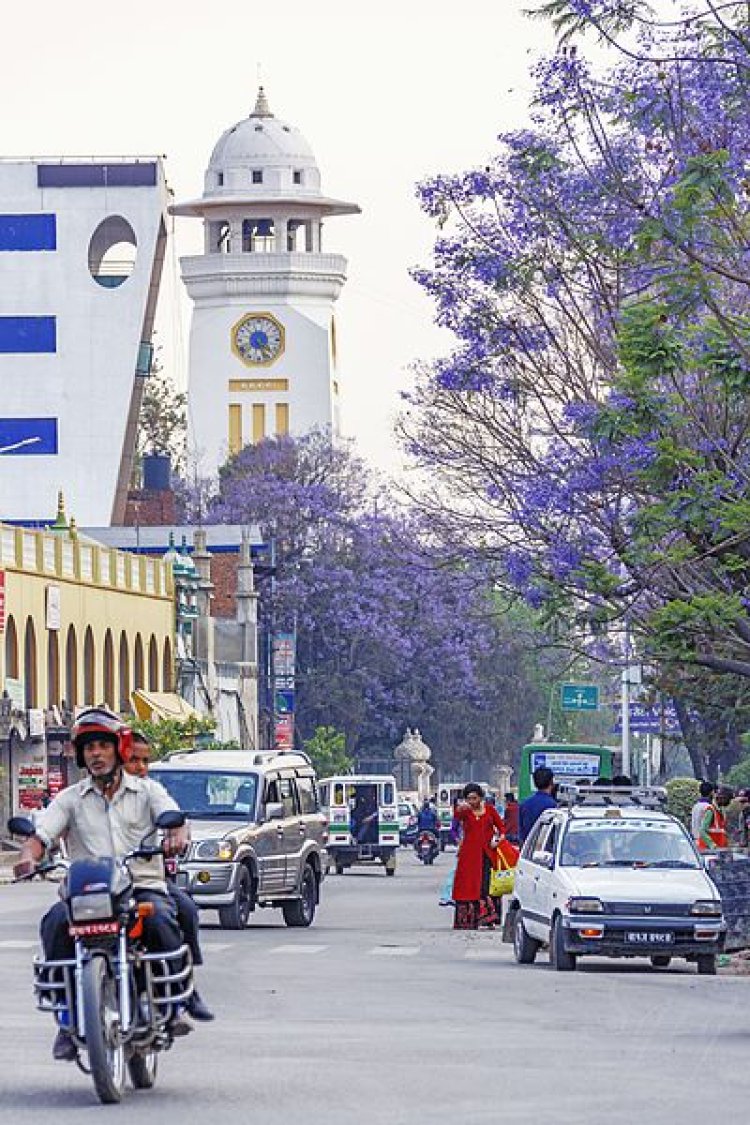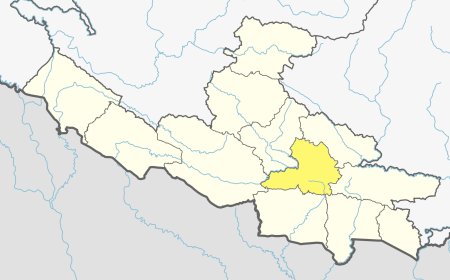Ghanta Ghar: Nepal's Iconic Clock Tower of Cultural Significance
Discover the rich history and cultural significance of Ghanta Ghar, Nepal's iconic clock tower. Explore its architecture, role in festivals, and restoration efforts, making it a vibrant meeting point in Kathmandu.

Nepal, a land of majestic landscapes and vibrant culture, is home to numerous architectural wonders that reflect its rich history. Among these stands the iconic Ghanta Ghar, an ancient clock tower that has witnessed the passage of time and serves as a cherished symbol of Nepal's heritage. This article explores the fascinating history and cultural significance of the Ghanta Ghar, providing a glimpse into the past and present. The Ghanta Ghar, also known as the Clock Tower, is a prominent landmark located in the heart of Kathmandu, Nepal. Here are some more details about this historical structure:
Construction and Architecture:
The Ghanta Ghar was built in the late 19th century, during the reign of Prime Minister Bir Shumsher Jang Bahadur Rana. The architectural style of the Ghanta Ghar is a fusion of Newar and European influences. The tower stands at a height of approximately XX meters and is constructed using bricks, wood, and stone. It features intricate woodwork and carvings that reflect the craftsmanship of the time.
Location:
The Ghanta Ghar is situated in the heart of the city's bustling marketplace, known as Ason. It stands tall at the intersection of Indra Chowk and Asan Tole, two popular areas in Kathmandu. And it is in front of Rani Pokhari and near Trichandra College.
Function and Symbolism:
The primary function of the Ghanta Ghar is to serve as a clock tower, displaying the time on each of its four sides. It has played a significant role in timekeeping for the locals, serving as a reference point for daily activities. The Ghanta Ghar also holds cultural and symbolic significance for the people of Nepal, representing the nation's heritage and unity.
Cultural Significance:
The Ghanta Ghar has been an integral part of cultural and religious events in Nepal. It serves as a focal point for various festivals, including Nepali New Year, Dashain, and Tihar, where it becomes a center for celebrations and gatherings. The tower has witnessed political rallies, public announcements, and demonstrations, making it a symbol of unity and the aspirations of the people.
Historical Transformations:
The Ghanta Ghar has witnessed the changing political landscape of Nepal. During the Rana dynasty's rule, the tower represented the authority and influence of the ruling elite. With the establishment of democracy in the 1950s, the Ghanta Ghar became a symbol of people's aspirations for freedom and democratic governance.
Restoration and Preservation:
In recent times, the Ghanta Ghar has undergone restoration efforts to preserve its historical significance. The government and local authorities have worked together to maintain its structural integrity and renovate the surrounding area. These initiatives ensure that the Ghanta Ghar remains a cherished landmark, connecting the past with the present.
Present-Day Significance:
The Ghanta Ghar continues to be a popular meeting point for locals and tourists alike. The square surrounding the tower is a bustling marketplace offering a wide range of goods and services. It showcases the cultural diversity of Nepal through shops, eateries, and cultural displays, creating a vibrant atmosphere. The Ghanta Ghar stands as a testament to Nepal's history, culture, and architectural heritage, inviting visitors to appreciate its timeless beauty and the enduring spirit of the Nepalese people.
Origins and Construction:
The Ghanta Ghar, also known as the Clock Tower, is located in the heart of Kathmandu, the capital city of Nepal. Its construction dates back to the late 19th century during the reign of Prime Minister Bir Shumsher Jang Bahadur Rana. The tower was built in the distinctive architectural style of the era, blending elements of Newar and European design. The Ghanta Ghar stands tall at a height of XX meters, adorned with intricate woodwork and beautiful carvings. It features a large clock face on each side, displaying the current time for all to see. The tower's construction materials primarily consist of bricks, wood, and stone, showcasing the craftsmanship of skilled artisans of that time.
Cultural Significance:
The Ghanta Ghar holds significant cultural and historical importance for the people of Nepal. It serves as a focal point of the city, attracting both locals and tourists alike. The tower's purpose extends beyond its timekeeping function, symbolizing the legacy of Nepal's monarchy and the enduring spirit of its people. For generations, the Ghanta Ghar has been a venue for various cultural and religious events. It has witnessed the grandeur of festivals, such as the Nepali New Year, Dashain, and Tihar, where it becomes a center of joyous celebrations and gatherings. The tower has also been a site for political gatherings, demonstrations, and public announcements, serving as a unifying symbol for the people.
Historical Transformations:
Throughout its existence, the Ghanta Ghar has experienced various transformations, reflecting the changing political landscape of Nepal. During the time of its construction, Nepal was under the rule of the Rana dynasty, which was characterized by its influence and authority. However, with the advent of democracy in the 1950s, the tower became a powerful emblem of people's aspirations for freedom and democracy. In recent times, the Ghanta Ghar has undergone restoration efforts to preserve its historical significance. The government and local authorities have worked together to maintain its structural integrity and renovate the surrounding area. These initiatives ensure that the Ghanta Ghar remains a cherished landmark, connecting the past with the present.
The Ghanta Ghar Today:
In the present day, the Ghanta Ghar continues to captivate visitors with its timeless charm. The bustling square surrounding the tower serves as a vibrant marketplace, offering a variety of goods and services. It provides a unique blend of traditional and modern experiences, with shops, eateries, and cultural displays showcasing the cultural diversity of Nepal. The Ghanta Ghar has become a significant meeting point, where people gather to socialize, shop, and enjoy the ambiance of Kathmandu. Its striking presence in the cityscape symbolizes Nepal's resilience and the endurance of its cultural heritage.
The Ghanta Ghar stands as a testament to Nepal's rich history and cultural heritage. It represents a link between the past and the present, embodying the spirit of the Nepalese people. As it continues to stand tall, the Ghanta Ghar invites us to appreciate the beauty of architecture, the passage of time, and the importance of preserving our shared history for generations to come.
What's Your Reaction?








































































































